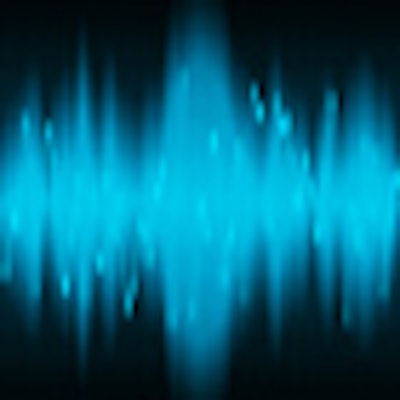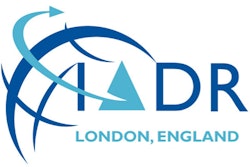
A team of engineers and clinical researchers from West Virginia University (WVU) and the University of Pittsburgh is making progress in their quest to develop a 3D ultrasound system for assessing gingival tissue and inflammation and diagnosing gingivitis.
While ultrasound is best known in dentistry for its scaling and surgical abilities, the WVU team has been studying the use of high-frequency ultrasound to construct 3D images of hard and soft tissues in the oral cavity. In previous research, they demonstrated the ability to construct 3D images of the mandible and surrounding tissues.
At the International Association for Dental Research (IADR) meeting in Brazil this week, they will present findings from a new study using this technology to assess gingival tissue.
"We are in the early stages of developing 3D ultrasound to measure tissue alterations in gingivitis," said Eros Chaves, DDS, MS, DMD, an associate professor at WVU who will be presenting the study at the IADR meeting on June 22. "We know that we can do it in vitro; for this study, we compared histologies with the ultrasound in vitro."
Clinical and research applications
Dr. Chaves and his colleagues collected in vitro ultrasound scans via a proprietary high-resolution system that uses a 55-MHz single-element transducer. Gingival tissue samples were immersed in water near the ultrasound transducer focus, and continuous acquisition with a 400-MHz data acquisition card was synchronized with a high-precision 2D positioning system to acquire measurements of the gingival tissue samples.
The researchers found that ultrasound scans for tissues with gingivitis exhibited higher values of integrated backscatter, time variance, time entropy, frequency integrated backscatter, wavelet root mean square value, and wavelet integrated backscatter than normal tissue samples or samples with mild gingivitis.
When they compared the ultrasound scans with the tissue histologies, both revealed similar changes in the tissue, the researchers noted.
These findings indicate that parametric ultrasound has the potential to be used for diagnosing gingivitis, the researchers concluded, although more research is needed to investigate the diagnostic value of ultrasound for clinical research and chairside use.
Before joining the faculty at WVU, Dr. Chaves was in private practice and also worked in product testing doing studies for some of the major toothbrush and toothpaste suppliers, he said. He sees a need for a better diagnostic tool for product testing.
"It was all based on subjective criteria of gingivitis and plaque," he said. "And knowing the cost of the examiners and the subjectivity, it felt like we needed a better tool. So we are trying to see if ultrasound, which has been demonstrated to be effective in soft tissue in other medical areas, could work in gingival tissue also. I see this more for the research field, but my partners see it more as a diagnostic tool that could be used in the dental office."
Ultrasound advantages
Ultrasound imaging offers several advantages over conventional imaging methods for assessing gingival tissue, according to Dr. Chaves. There is no exposure to ionizing radiation, it is potentially more accurate than manual probing, and it is noninvasive.
"In clinical diagnostics of gingivitis, you have to probe the gingival tissue, which is an irreversible index because when you touch the tissue, it changes," he said. "If it starts bleeding and you have second examiner, they will see something different. Ultrasound is noninvasive and reversible. It doesn't change anything."
In addition, ultrasound technology is getting increasingly sophisticated, Dr. Chaves noted.
"The waves are much higher intensity now, so you can scan the tissue much better," he said. "CT scans can give a 3D image of the mandible, and now ultrasound can do the same thing with sound waves instead of x-rays."
Even so, there is more work to be done. While they originally had to use the same kind of ultrasound machine that is used in obstetrics and other medical examinations, the researchers have been able to reduce the size of the ultrasound scanner so they can now do more precise intraoral imaging rather than extraoral. The next challenge will be to image more of the oral cavity during a scan, rather than just specific areas. This will enable them to then begin in vivo studies.
"At this point, we are really learning and developing," Dr. Chaves said. "Every time we learn that it is possible to do this, then we have to learn how to do it in the patient, then the entire mouth of the patient, then in a patient population, very fast. It is going to take some work and creativity to learn how to do this in the entire mouth of the patient, rather than just specific parts of the gingival tissue."



















